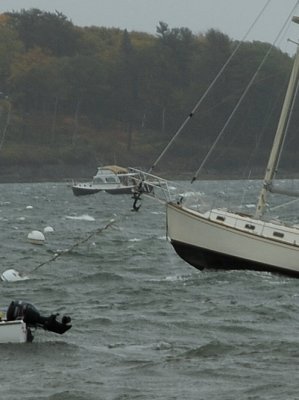Hey SailFanatic (Capt. Larry) and any others that want to chime in --
I am going to go with two of the Yale Maxi Moor pendants, setup where one is slack by a few inches to be the backup in case the primary fails. I emailed Yale about their 1/2" vs. 5/8" versions, and they indicated either would work for my boat so long as I used two as planned.
The issue is that the Cal bow cleats don't have a lot of space between the uprights of the cleat. If I go with 1/2" I can go through the middle and around the ears which seems more "secure" to me. The 5/8" will not fit through the middle, so that would be a twice around the ears. I have photos of both at the marina for testing.
View attachment 189779
View attachment 189778
Is there any opinion of the security of the line to the cleats about twice around or through the middle and over the ears?
The backing plates for the cleats seem stout enough,
x
View attachment 189777
I may add some type of cross-brace inside the chain locker to "tie" the two backing plates together and then re-attach the anchor rode "bitter ends" to help spread the load of mooring tension loads.
I plan on storing the anchor inside the boat before moving to the mooring in April or May.
All thoughts and comments welcome. Thanks for reading this new post.





